Welcome back to the How to Play Magic: The Gathering series from Star City Games. If you’ve missed either of the previous two entries in the series, you can find them below.
Today, we’re going over the steps of a turn, taking you from the untap phase all the way to the cleanup phase.
Taking Turns
In a game of Magic, you alternate taking turns with your opponent. Each turn consists of a handful of phases that you proceed through. There are five phases: the beginning phase, the first main phase, the combat phase, the second main phase, and the ending phase. You will cycle through all five in order each turn, whether you have actions to make in them or not.
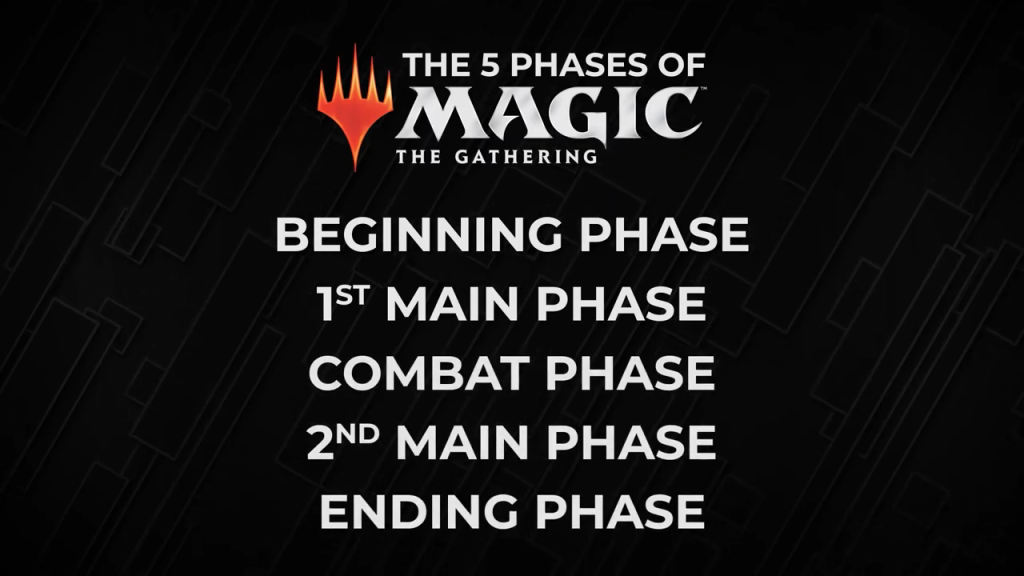
The Beginning Phase
We’ll start with the beginning phase because that’s where you start on your turn. The beginning phase is subdivided into three steps: the untap step, the upkeep step, and the draw step.
The Untap Step
The first step is the untap step, where you untap all of your tapped permanents. On the first turn, you won’t have anything to untap, but for the rest of the game, you’ll untap your lands so you can use them again, and your creatures so that they can attack again or be ready to block.
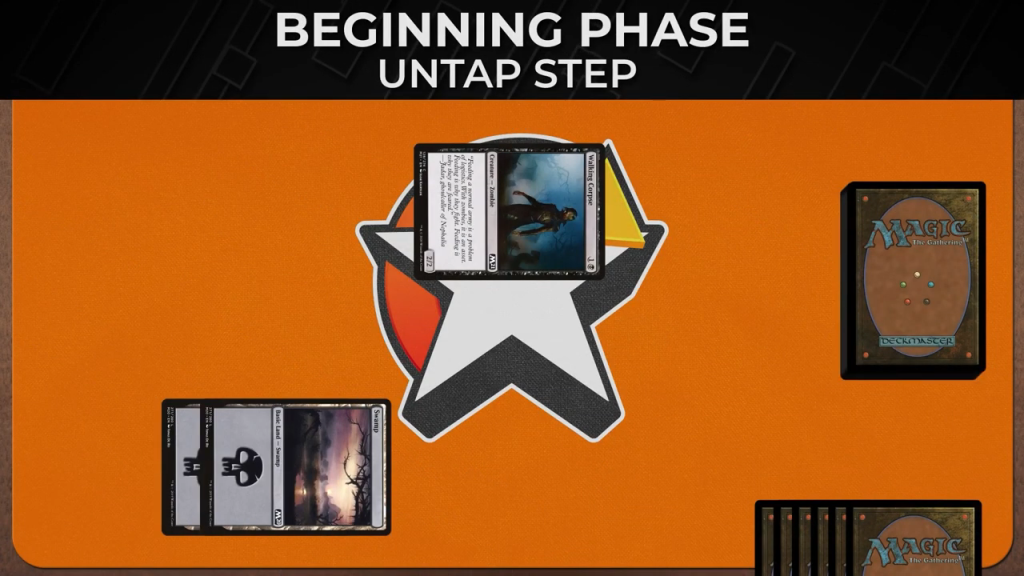
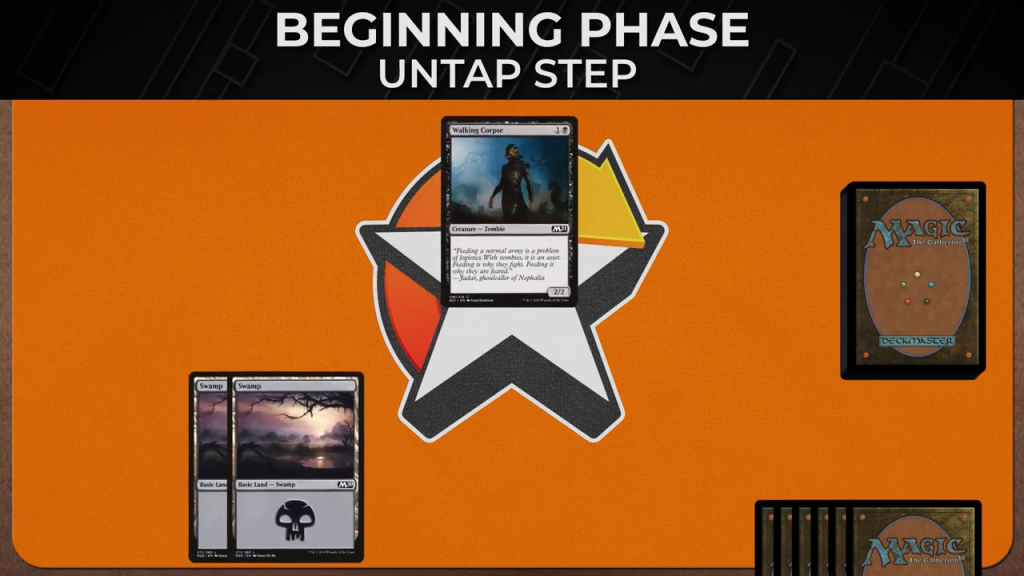
The Upkeep Step
The upkeep step is the second step in the beginning phase. This is the first part of your turn where players can cast instants and activate abilities. Many cards mention this part of the turn for when they trigger. Cards will read, “At the beginning of your upkeep, do [BLANK].” If you control Phyrexian Arena, you will get to draw a card at the beginning of your upkeep and lose one life – a good deal, if you ask me.
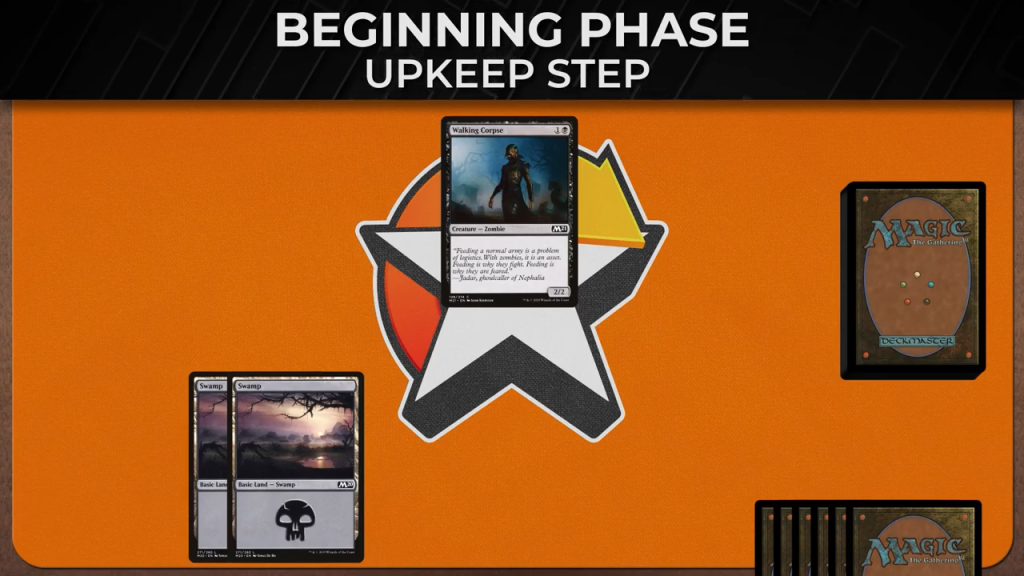
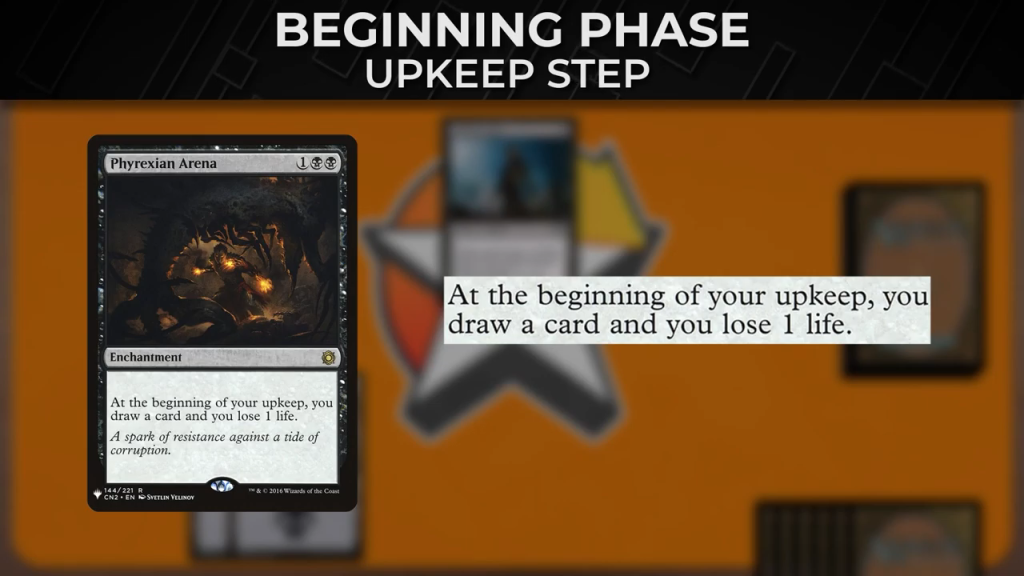
The Draw Step
Once all abilities have resolved and both players pass priority, move on to the draw step. The draw step is where you must draw a card from the top of your library, even if you don’t want to. Trust me, you’re going to want to draw a card. If a player can’t draw a card from their library, they lose the game.
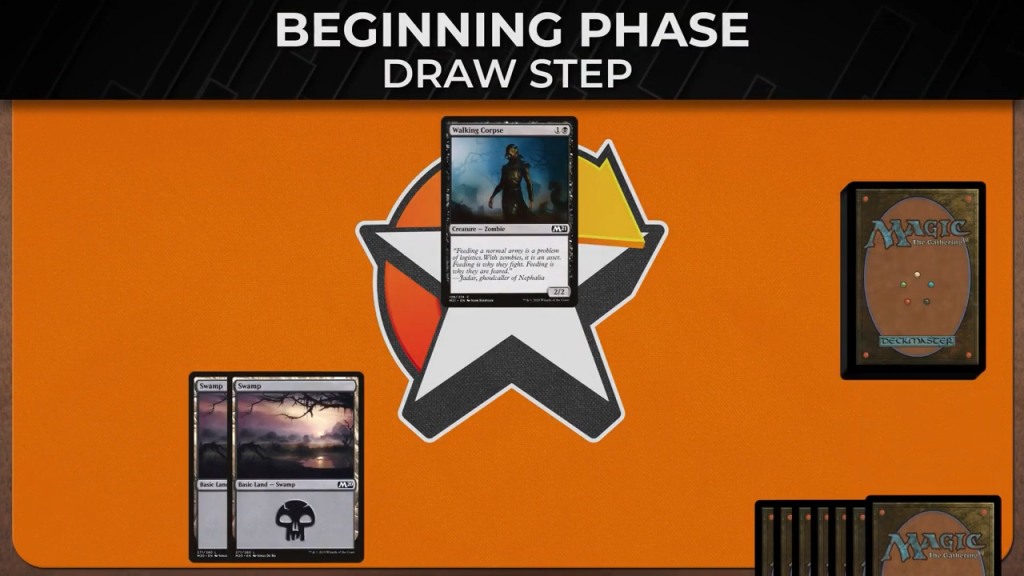
The first player in a game doesn’t draw a card on their first turn to make up for getting to cast spells first. Players can cast spells and activate abilities in this step as well.
The First Main Phase
Next up is first main phase. A main phase is when you get to play one land and cast any number of spells you want. You get two main phases, but can still only play one land per turn. Your main phases are when you get to play sorceries, creatures, planeswalkers, artifacts, and enchantments.
You get an additional main phase, the second main phase, following the combat phase. Main phases don’t have any additional steps.
The first main phase lasts as long as you want to cast spells, ending once both players have no abilities to resolve and have passed priority. From here, we move on to the combat phase.
The Combat Phase
The combat phase is where creatures attack players or planeswalkers and deal damage. The combat phase has five steps: beginning of combat step, declare attackers step, declare blockers step, combat damage step, and end of combat step.
The Beginning of Combat Step
The beginning of combat step is effectively the announcing of changing phases from the main phase to the combat phase. Players can cast instants and activate abilities in this step right before the active player declares any creatures that will be attacking.
The Declare Attackers Step
The declare attackers step is when the active player decides how many, if any, of their creatures will attack a player or planeswalker. A player can have their creatures all attack a player, all attack a planeswalker, or split them up however they want.
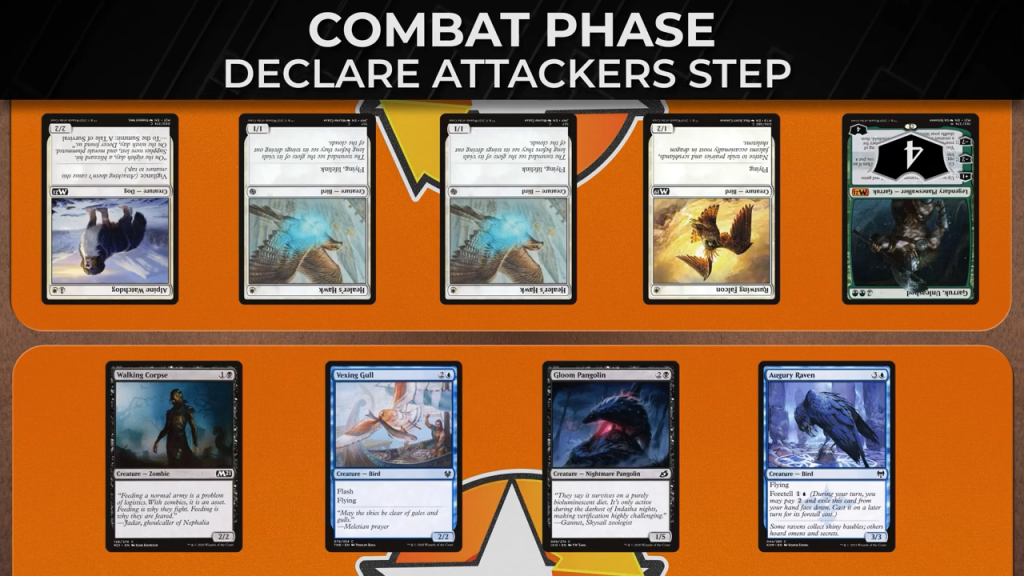
Attacking causes the creatures to tap. You can choose not to attack with your creatures so that they can block your opponent’s attack on the following turn. Players can then cast instants or activate abilities.
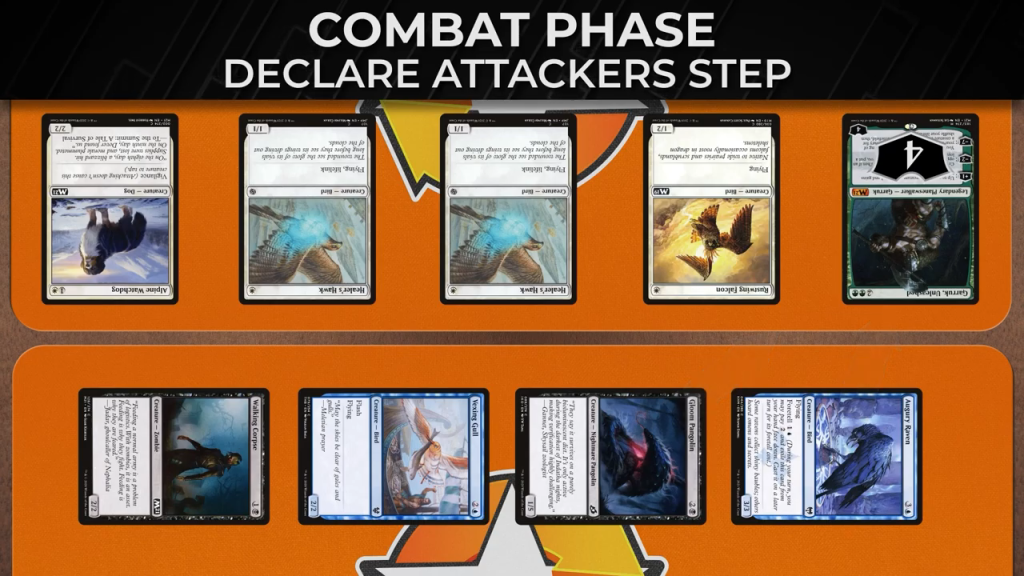
The Declare Blockers Step
The declare blockers step is when the opponent gets to declare how many, if any, of their untapped creatures will block your attacking creatures. If multiple creatures block a single attacking creature, you get to order the blockers to determine which creature the attacking creature deals damage to first, second, and so on. Players can then cast instants or activated abilities.
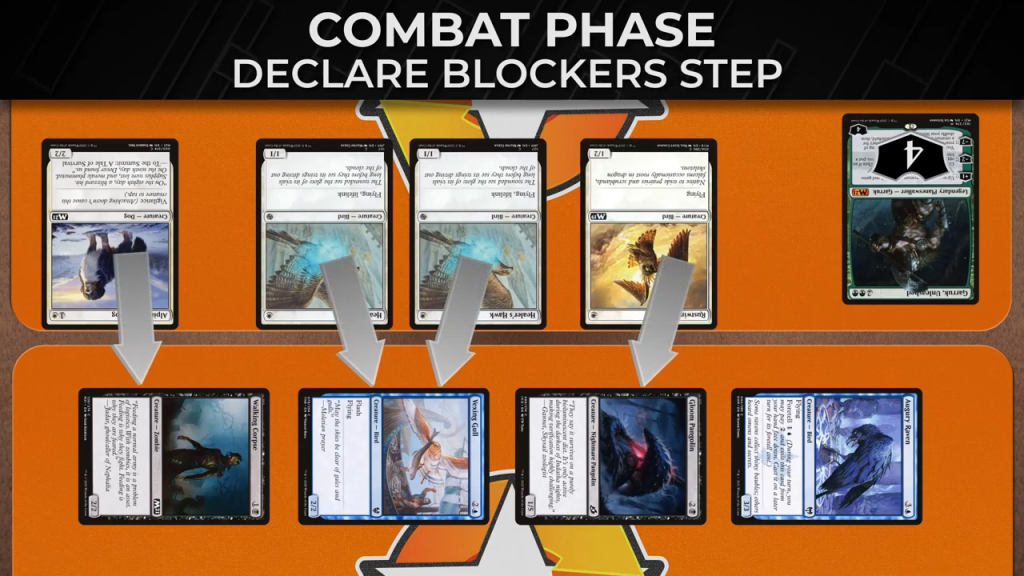
The Combat Damage Step
The combat damage step is where each attacking or blocking creature remaining on the battlefield assigns its combat damage to players, planeswalkers, and creatures. All combat damage is dealt at the same time. Players can then cast instants or activated abilities.
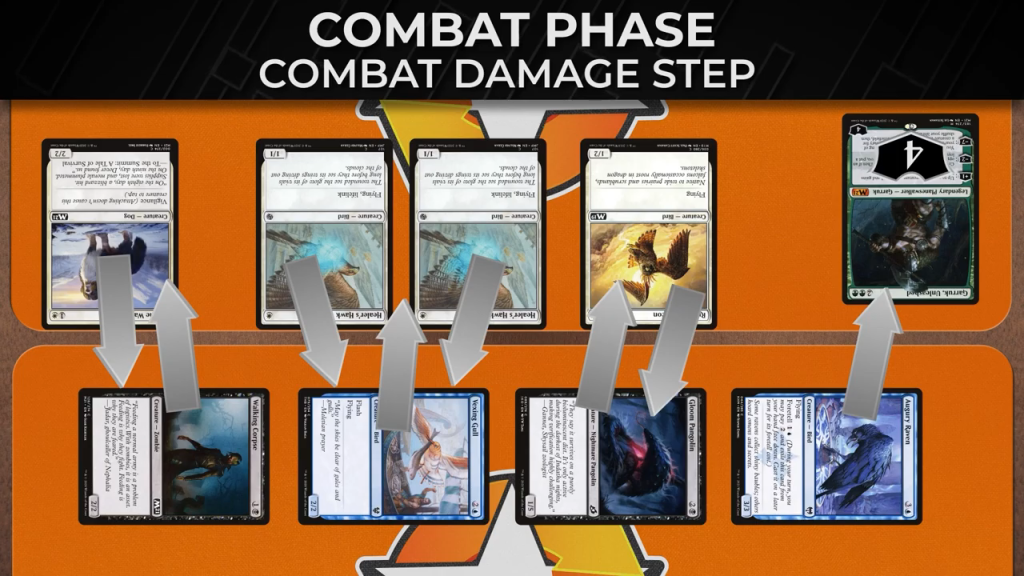
In the above scenario, my Walking Corpse and my opponent’s Alpine Watchdog both deal two damage to each other, which will kill both of them.
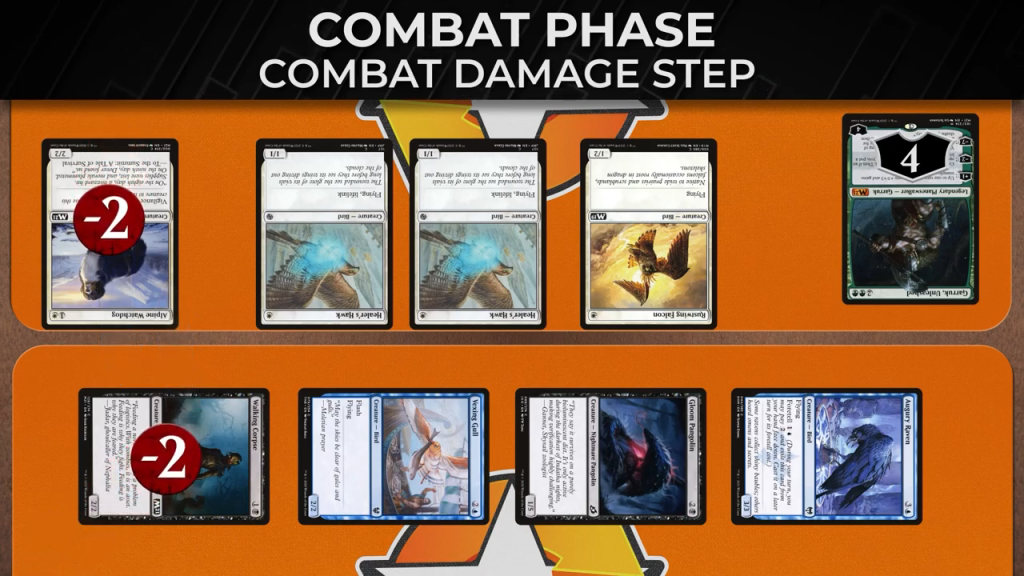
My 2/2 Vexing Gull is blocked by two 1/1 Healer’s Hawks and I’ll assign one damage to each of them, while my Vexing Gull will take two damage as well, one from each Hawk, killing all three.
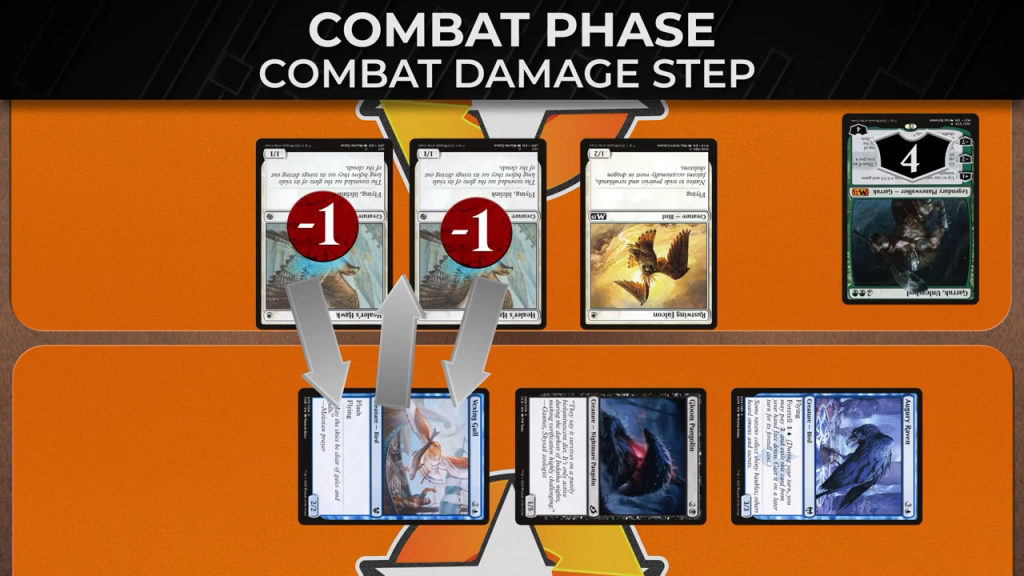
My Gloom Pangolin will deal one damage to the Rustwing Falcon, and it will deal one damage to my Pangolin.
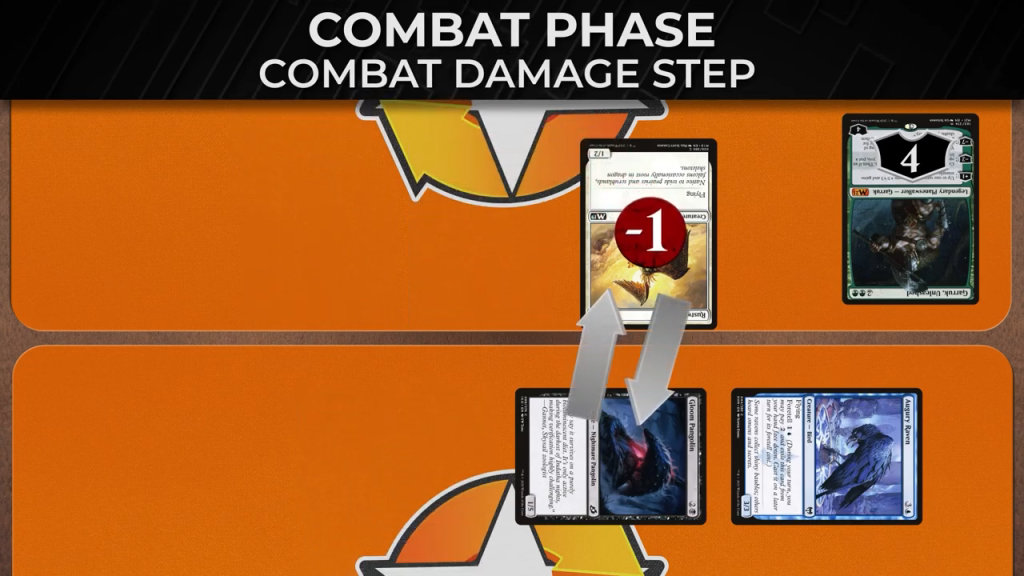
My Augury Raven will go unblocked and deal three damage to Garruk.
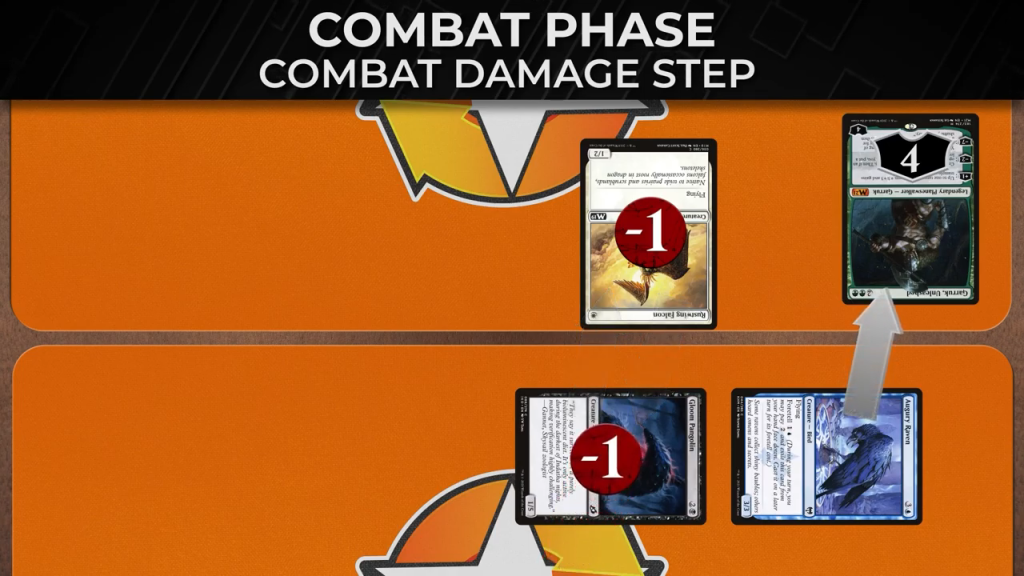
The End of Combat Step
The end of combat step is the final step of the combat phase, where players can cast instants or activated abilities.
The Second Main Phase
From here, we move on to the second main phase. Just like your first main phase, you can cast any type of spell and play a land if you haven’t already done so this turn. After your second main phase, you move to the last phase of the turn, the ending phase.
The Ending Phase
The ending phase of the turn is the last phase and breaks down into two steps, the end step and the cleanup step.
The End Step
The end step is similar to the upkeep step, as it is a part of the turn that is specifically mentioned on cards. Many cards have abilities that read, “At the beginning of your end step, do [BLANK].” This is the last step of the turn where players can cast instants and activate abilities.
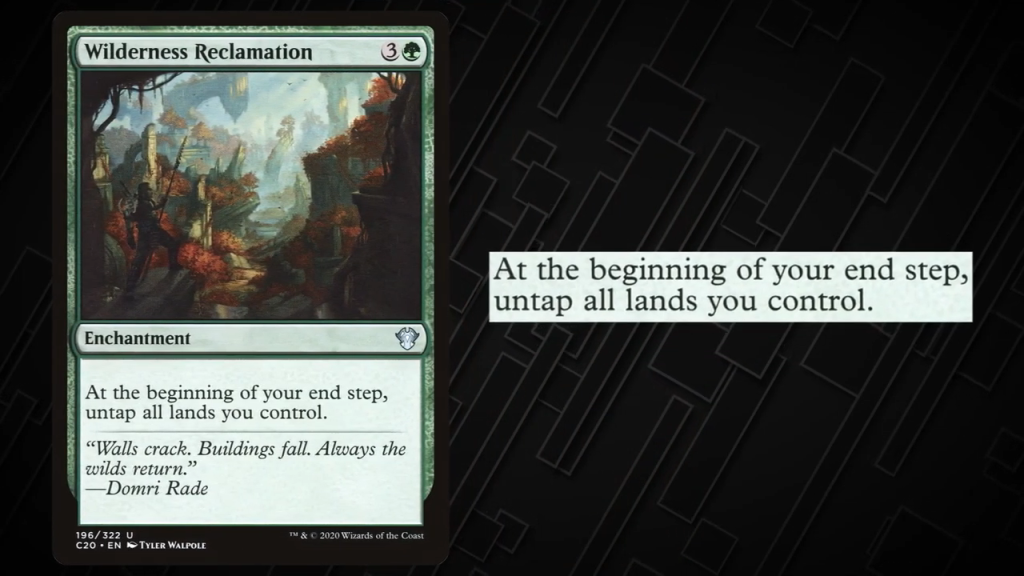
The Cleanup Step
The cleanup step is the final step to a turn. If you have more than seven cards in your hand during your cleanup step, you must choose and discard cards until you reach seven cards.
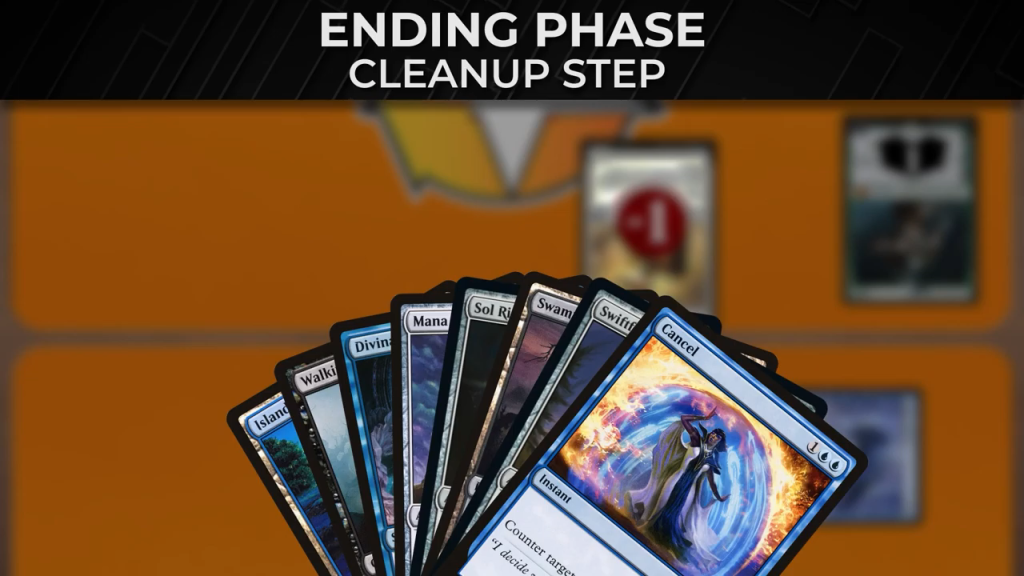
After that, all damage is removed from creatures and all “until end of turn” effects end.
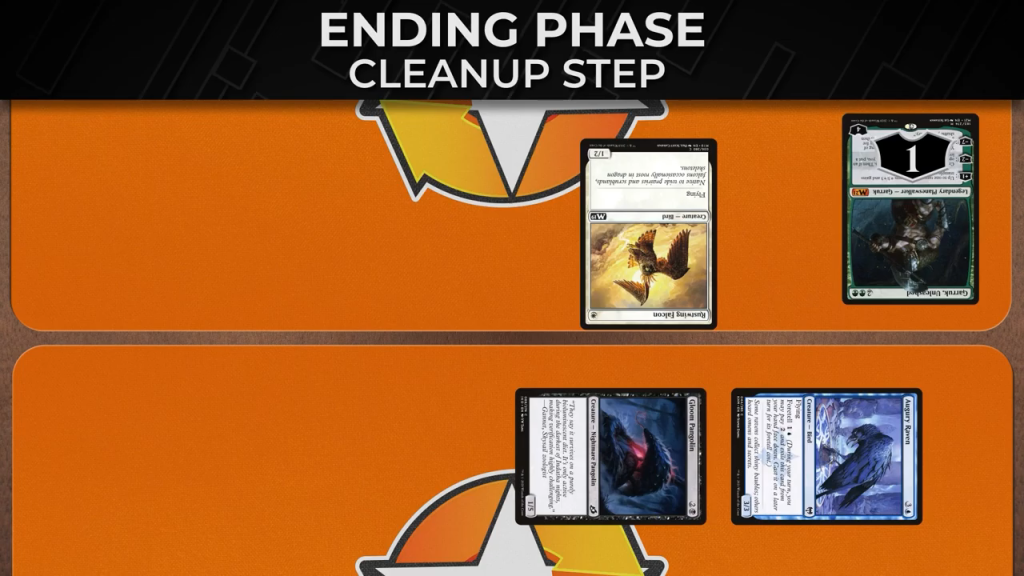
Another Turn
And that’s how you play a turn of Magic. Now your opponent gets to do all of that. While there are many steps, and it can appear complicated, remember that many of these steps can move quickly when neither player has a play to make. Already played a land and don’t have enough mana to cast any more spells? Then your main phases move quickly. No creatures to attack with? Then your combat doesn’t last very long. You’ll pick it up and see where to make shortcuts in no time.
Thanks for reading this How to Play Magic: The Gathering entry, and we hope you found it helpful. For more in the series, check out our Star City Games YouTube channel and make sure to visit StarCityGames.com for one of the best selections of Magic: The Gathering singles, sealed product, news, and deck ideas in the world.
Next Article: Keywords
Previous Article: Card Types

